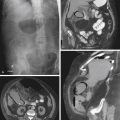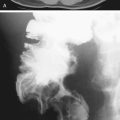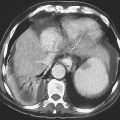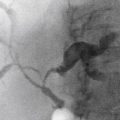CASE 61
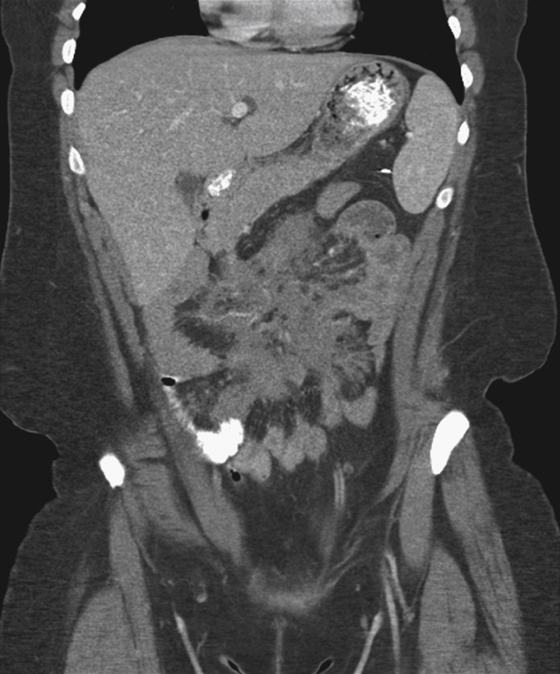
History: A 30-year-old woman presents with abdominal distention.
1. Which of the following should be included in the differential diagnosis of the imaging finding shown in the figure? (Choose all that apply.)
2. What polyposis syndrome is associated with mesenteric fibrosis?
D. Familial adenomatous polyposis
3. Some tumors can cause this appearance. Which of the following would not?
4. When mesenteric fibrosis occurs in a round mass, what is it called?
ANSWERS
CASE 61
Desmoid, Gardner’s Syndrome
1. A, B, C, and D
2. D
3. A
4. B
References
Dahnert W. Radiology Review Manual. 6th ed. Philadelphia: Lippincott Williams & Wilkins; 2007. p 833
Cross-Reference
Gastrointestinal Imaging: THE REQUISITES, ed 3, p 284.
Comment
Various fibrous conditions, which represent a combination of fibrosis, inflammation, and fatty replacement, can affect the mesentery. These conditions have been given several names, which are somewhat dependent on which component of the disease predominates. Terms used for this condition include retractile mesenteritis, fibrosing mesenteritis, mesenteric panniculitis, mesenteric lipodystrophy, and desmoids. Many use the broad category of fibrosing mesenteritis to describe this condition. Most often this condition occurs in patients without any predisposing factors. Patients with familial adenomatous polyposis (Gardner’s syndrome) are known to develop fibrotic lesions of the mesentery. The lesion may be an ill-defined fibrotic reaction, as in fibrosing mesenteritis, or it may be a more focal, rounded mass, which may be termed a desmoid. The modality that allows the best visualization of these changes is CT (see figure). The tissue is denser than the mesenteric fat, although areas of fat may be seen within it. The fibrous tissue travels along the tissue planes and tends to surround structures, such as vessels or bowel, and can encase them to some degree. It also may be a more localized, ovoid mass that appears well defined, which is what some tend to refer to as a desmoid. This infiltrating fibrous reaction also mimics neoplastic processes, and it may be difficult to distinguish the two. Lymphoma, serosal spread of tumor, and even carcinoid tumors can resemble fibrosing mesenteritis. On barium studies of the bowel, the loops of bowel may be displaced or fixed in position.


